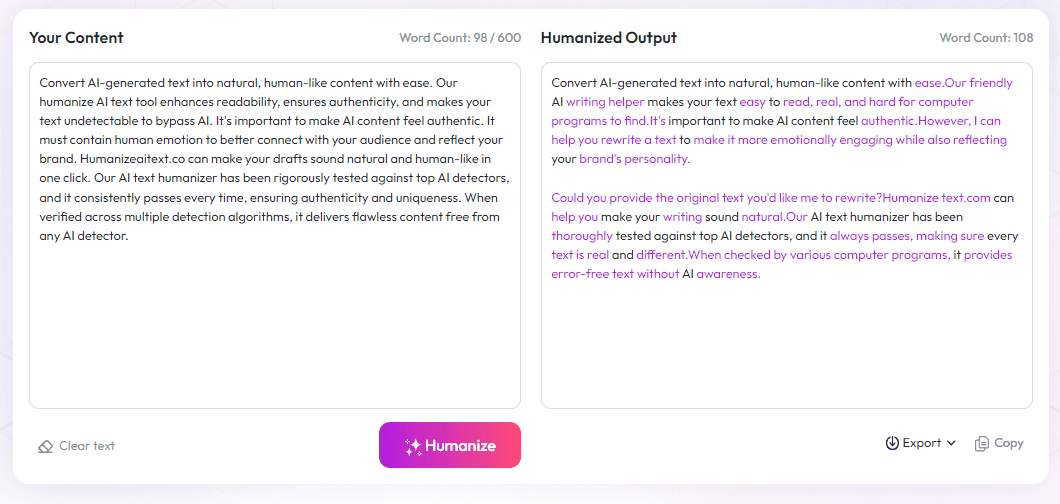Table of Contents
If you're curious about work for hire contracts, you've probably wondered who owns the rights to creative work—especially when we’re talking about jobs or gigs. These contracts are special legal papers that make it clear whether the employer or the creator keeps the copyright from the moment work is finished. Keep reading, and you’ll find out how to make sure your rights are protected when creating or hiring work.
By understanding what a work for hire contract involves, you'll learn how to write solid agreements and avoid future confusion. Stay with me, and I’ll share simple tips to help both employers and creators stay on the right side of the law.
In just a few words, I’ll give you the key facts so you can navigate work for hire contracts with confidence.
Key Takeaways
Key Takeaways
- Work for hire contracts clarify who owns the rights to creative work. They typically transfer ownership from creators (employees or freelancers) to employers upfront.
- For employees creating work during work hours, ownership is automatic. For freelancers, a clear written agreement is essential to assign rights.
- Always include specific language in contracts stating the work is “made for hire” and clearly outline rights transfer, scope, and deadlines.
- Legal details matter—rules vary by location, and misunderstandings can lead to disputes. Consulting a lawyer can protect your interests.
- With many working remotely or gig-based, use standardized agreements, communicate clearly, and keep all documentation updated to avoid future issues.
- Stay informed on changing laws and best practices, and leverage online resources or legal experts to draft solid agreements.
- Examples of work for hire include employee-created content and freelance projects meeting legal criteria, ensuring rights are assigned upfront.
- The growth in freelance and contract work makes it more important than ever to have clear ownership agreements to protect your business and creative rights.

Step 1: Understand What a Work for Hire Contract Is
A work-for-hire contract is a legal agreement where the creator’s rights to a work are assigned to the employer or client from the very beginning.
It’s essentially a deal that states, “You create, we own.”
Law covers two main types:
- Employment works: When an employee makes something during their job hours, the company automatically owns it.
- Commissioned works: Creative projects like videos or translations can qualify if there's a written agreement stating they’re "made for hire."
Without clear contracts, misunderstandings about ownership can happen, especially when working with freelancers or independent contractors.
Knowing the basics can help you avoid disputes and ensure everyone’s on the same page.
Step 2: Know Who Owns the Copyright
When an employee creates a work within their job, the employer owns it right away — no extra paperwork needed.
But with contractors, it’s different: unless there’s a specific work-for-hire agreement, they usually keep the rights to what they produce.
Having a well-worded, signed contract is the best way to clearly assign who owns what, especially if you want to use the work beyond the initial project.
Understanding rights ownership is essential, particularly as the gig economy continues to grow—by 2025, freelancers make up about 46.6% of the global workforce.
Step 3: Build Strong Work for Hire Agreements
Start by explicitly stating that the work is “made for hire” in your contract.
Clearly outline what the project involves, including deliverables, deadlines, and scope.
Include language that transfers all rights, both now and in the future, covering uses like royalties or adaptations.
Make sure the contract is signed before work begins—waiting until after can cause legal headaches.
Adding clauses that waive claims ensures the creator can’t later contest ownership.
Step 4: Recognize Legal Details and Common Pitfalls
Not every type of work by a contractor automatically qualifies as a work for hire—specific criteria must be met.
For example, in California, using a work-for-hire label might be seen as an employee relationship, impacting taxes and benefits.
It’s a myth that work-for-hire means you can always reclaim rights later; once rights are assigned, they usually stay with the owner.
Legal nuances can trip you up—so it’s smart to consult a lawyer for large projects or complex agreements.
Step 5: Follow Tips for Employers and Contractors
- Employers: Use clear, written contracts that specify work-for-hire status according to local laws.
- Contractors: Read every clause carefully, especially language about rights and future earnings.
- If in doubt, reaching out to a legal expert can save headaches down the road.
Step 6: Recognize Examples of Work for Hire Situations
Employee-created content like software, marketing materials, or designs made during working hours usually falls under work for hire.
Freelance projects, such as logo design, can qualify if the contract clearly states it’s a work for hire and meets legal requirements.
Plus, in creative fields like film, publishing, or music, explicit contracts ensure rights are transferred upfront.
Understanding these examples helps clarify how to protect your rights and ensure ownership is properly assigned from the start.

Recognize the Impact of Growing Gig and Contract Work
The gig economy and freelance work have expanded significantly, with nearly 46.6% of the global workforce participating in some form of freelance or contingent work.
This trend isn't just a passing phase—it's shaping how companies hire and how workers earn their living.
In 2025, almost 16 million temporary and contract employees are hired annually through staffing agencies in the U.S. alone, a number that keeps climbing, especially in sectors like healthcare, IT, and manufacturing.
This growth means more opportunities but also more confusion over rights and ownership, making clear work-for-hire contracts more important than ever.
Business owners should consider how to legally protect their investments when working with a contingent workforce, including understanding the nuances of rights transfer and properly documenting agreements.
Understand the Legal and Financial Risks
While work for hire can streamline ownership, it comes with several legal nuances and risks that can trip you up if you're not careful.
For example, some jurisdictions, like California, interpret work-for-hire language differently, sometimes classifying such work as an employee relationship, which affects taxes and benefits.
Failing to properly document rights or misunderstanding the scope of work can lead to costly disputes down the road.
Employers should be aware that once rights are assigned through a signed contract, reversing that decision isn't straightforward—so clarity upfront is key.
Hiring managers and contractors alike should also be cautious about the scope, ensuring that work clearly qualifies under the legal categories to avoid unintended ownership issues.
How to Draft a Clear and Enforceable Work for Hire Agreement
First off, make sure your contract explicitly states that the work is “made for hire” within the language of the agreement.
Don't just rely on vague clauses—be explicit about what rights are being transferred, including future uses like adaptations or earnings from licensing.
Describe the project scope, milestones, deadlines, and deliverables precisely to minimize misunderstandings.
Include clauses that waive any claims or rights from the creator afterward, ensuring that the employer fully owns the work from the start.
Always get signatures before work begins—waiting until the project is done can open the door to legal complications.
Consider adding clauses that specify jurisdiction and governing law to avoid confusion if disputes arise.
Practical Tips for Managing Work for Hire in a Growing Remote Workforce
In a landscape where remote and gig workers are common, clear communication and documentation are just as crucial as the contract itself.
Use project management tools and centralized communication channels to track work progress and changes.
Regular check-ins and updates can help catch misunderstandings early, especially when working across different legal jurisdictions.
Implement standardized contract templates that specify work for hire language tailored to your business and location.
Be proactive about educating your team—both in-house and freelance—about ownership rights and legal expectations to prevent disputes or misunderstandings.
Keep Up With Evolving Laws and Best Practices
Employment laws and intellectual property regulations are constantly changing, especially as the contingent workforce grows.
Staying informed requires regular check-ins with legal counsel and industry updates to ensure your contracts remain enforceable and up-to-date.
Many businesses now consult specialized IP lawyers or contract experts to create bulletproof agreements tailored to their industry and location.
It’s also wise to review your contracts periodically, especially when expanding into new markets or working with different types of freelancers.
Following reliable sources, like legal blogs and industry associations, can help you spot legal changes that might affect your work-for-hire deals.
Take Advantage of Resources to Simplify Work for Hire Processes
Fortunately, there are online tools and templates that can help simplify drafting clear agreements and managing rights transfer smoothly.
Some platforms offer customizable contract templates that include strong work-for-hire clauses adapted to various industries.
For creative projects, websites like AutomateED provide guides that help you understand what to include in your contracts.
Using these resources can save time and help ensure your agreements are legally solid and clear to all parties involved.
Always consider consulting a legal professional for complex or high-value projects, especially when working across multiple jurisdictions.
FAQs
A work-for-hire contract is a legal agreement where the employer owns the copyright of work created during employment or under specific commissioned projects, transferring rights automatically from the creator to the employer.
In a work-for-hire setup, the employer or hiring party owns the copyright from the moment the work is created, provided there’s a clear, written agreement specifying transfer of rights.
The agreement should clearly state the work is “made for hire,” define scope, assign rights, include transfer language, and be signed before work begins to ensure proper ownership and rights transfer.
No, only work that falls into specific legal categories and has a written agreement can be considered work for hire. Not all contractor work qualifies automatically.



